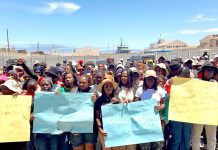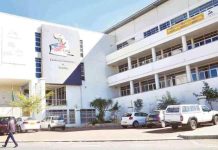Africa-Press – Namibia. With Namibians bracing to head to the polls on 26 November for the 2025 Regional Council election, the Otjozondjupa region remains a key battleground.
Historically, the region is dominated by Swapo in terms of constituencies won over the years, while NUDO has also maintained a grip on some of the constituencies.
The Otjozondjupa region is made up of seven constituencies, namely: Grootfontein, Otavi, Otjiwarongo, Okahandja, Okakarara, Omatako and Tsumkwe.
Statistics provided by the Electoral Commission of Namibia (ECN), indicate that Swapo claimed the Okahandja, Otavi, Otjiwarongo, Grootfontein and Tsumkwe constituencies during the 2020 Regional Council election.
NUDO won the Omatako and Okakarara constituencies during the same election.
Independent candidates
With more candidates contesting as independent candidates in recent years, they have provided formidable competition. In the 2020 Regional Council election independent candidates were being runners up in the Omatako, Okakarara and Otavi constituencies respectively.
For the upcoming Regional Council election, the Okakarara constituency has three independent candidates, who will contest against IPC, NUDO, PDM and Swapo.
Two independent candidates will contest the Omatako Constituency against IPC, NUDO and PDM and Swapo.
For the Grootfontein constituency, one independent candidate will be up against IPC, LPM, PDM, Swapo, UDF and the United Namibians Party.
Okahandja also has one independent candidate competing against Affirmative Repositioning, IPC, LPM, PDM, Republican Party, Swapo and UDF.
Another constituency with one independent candidate is Tsumkwe as LPM, NUDO, PDM, Swapo and the United People’s Party candidates also make up the ballot sheet.
The Otavi is the constituency in the Otjozondjupa region without independent candidates. Residents from this constituency will need to choose between candidates from IPC, PDM, Swapo, UDF and the People Unite for Change association.
Voter turnout
The ECN indicated that 1.5 million voters registered from 1.67 million eligible voters.
For the 2020 Regional Council election, there were 1,408 670 registered voters. However, only 38% (526 373 voters) turned out at the polls to vote. In 2015, the turnout was even less with 36.5% (384 258) voters casting their votes from 1,051 471 voters registered.
The highest voter turnout this century was at the 2004 election when 57.5% of the registered voters turned up for the elections.
The turnout for the Regional Council election faired much better during the first two elections, recording the highest in 1992 with 81.1%. This was followed by a dismal turnout of 40% in 1998.
For the Local Authority election, the turnout followed similar trends, with the highest turnout being the 1992 elections with 82.3%. The rest of the turnouts all fell below 50%, with the ECN collating turnouts of 33.8%, 45.5%, 33.5%, 39.6% and 43.2% for the 1998, 2004, 2010, 2015 and 2020 Local Authority election.
The ECN’s Electoral Chief, Peter Shaama assured the public that the commission remains resolute and committed towards ensuring free, fair, transparent and credible elections.
“We call upon stakeholders to play a collective role in fostering a democratic elections process and ensuring the integrity in our process,” he said.
For More News And Analysis About Namibia Follow Africa-Press






